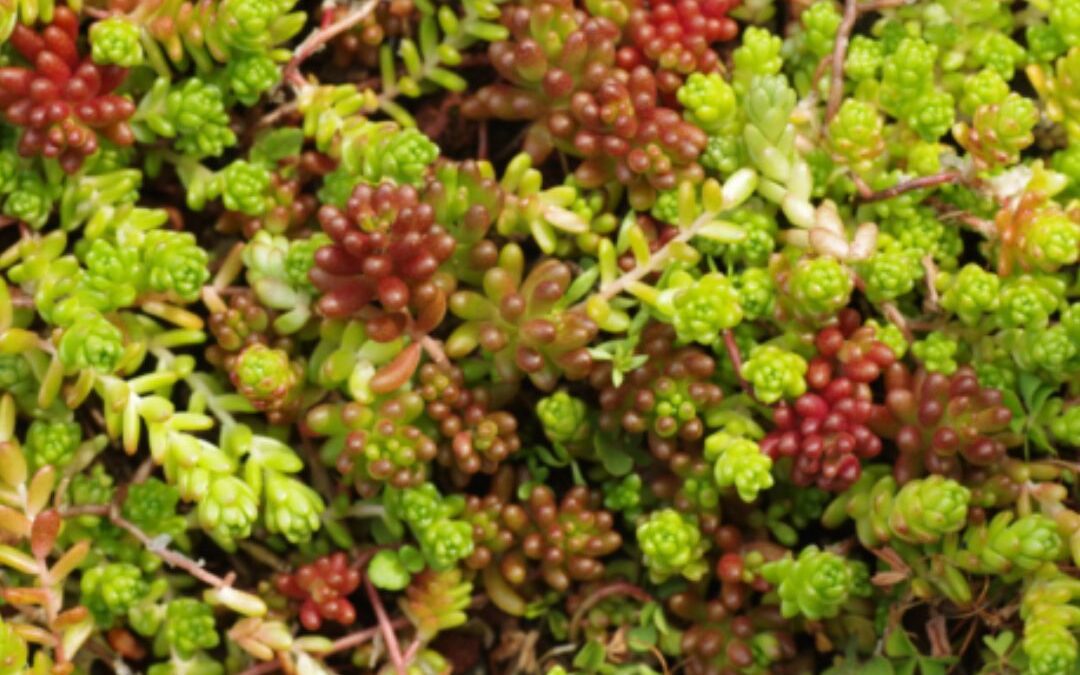One of the great qualities of succulents is that they are easy to care for. Succulents are great plants for the beginner gardener, and sedum succulents are a great place to start.
Sedum succulents (otherwise known as Stonecrop) come in a wide variety of shapes and colors. Which type should you choose? Well, hopefully this post will help.
I usually use these lovely succulents in one of three ways:
- The first is just adding Autumn Joy to a landscape! Yes, that is the common name of the plant: Autumn Joy.
- The second way I like to use sedums is to mix a bunch of the ground cover sedum as . . . well, as ground cover.
- The third great use of sedum is to add them as an accent to a pot or better yet, trailing over the pot! This is a look I believe you have seen before.
Let’s dive a bit deeper into each!
1. Add Autumn Joy to your landscape
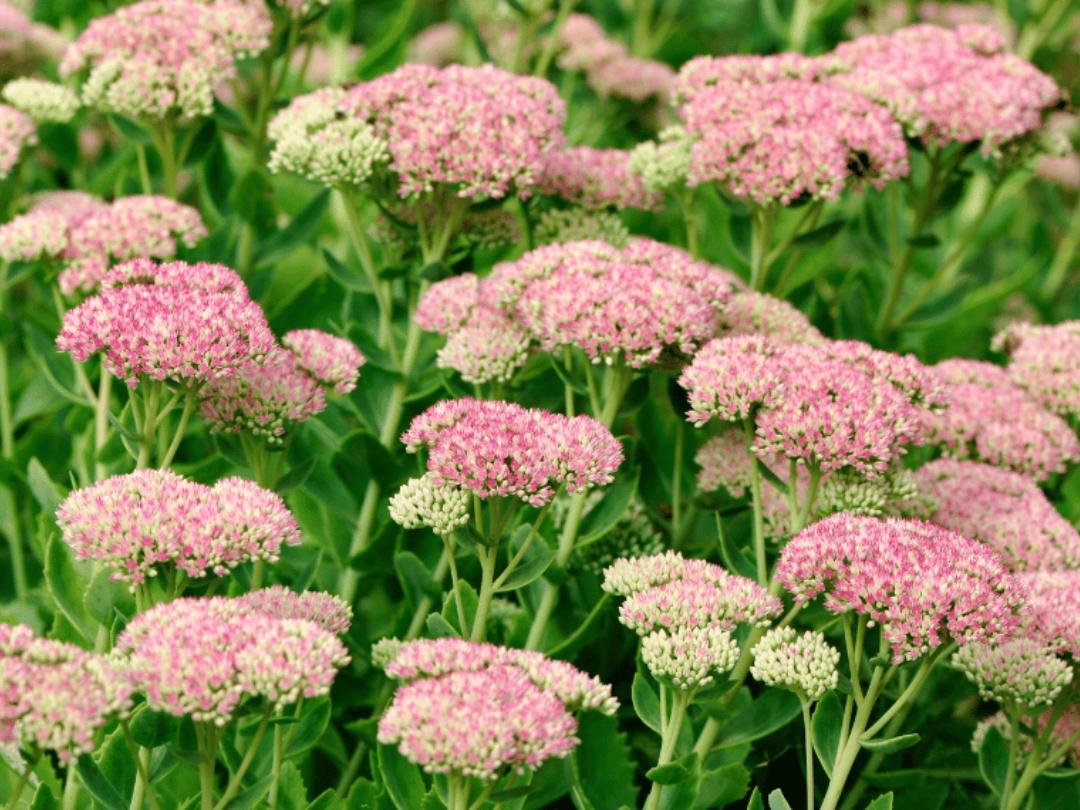
What’s to love about this plant? First of all, the name. Autumn Joy! How can you NOT want to plant it?!!
It’s a bit of a cheat for me to tempt you with the common plant name, but the botanical name for Autumn Joy has changed from Sedum spectabile to — get this, Hyloterephium telephium ‘Herbstfruede’. What a mouthful!
Thankfully, the common name still remains Autumn Joy, and many nurseries (including some of my favorites) still label it as Sedum spectabile.
The plant is a hybrid of Sedum telephium and Hylotelephium spectabile, and I guess some people felt the plant favors the Hylotelephium side of the family over the Sedum side.
Regardless of this confusion, it’s well worth adding this lovely succulent to your garden.
The plant-formerly-known-as-sedum is not a ground cover. It gets to 2-feet tall with stunning pink flowers that bloom in the late summer and yep, in autumn. The blooms fade to a lovely rosy-red in the fall. It’s a drought-tolerant and tough stonecrop that spends a good portion of the year creating a bouquet in the garden.
Hyloterephium Autumn Joy is also a brilliant cut flower. It’s even a lovely dried flower! Just let the flowers fade on the stem and then cut. It’s always nice to know how useful a plant can be in your garden!
There are a lot of varieties to choose from, but I always go straight for Autumn Joy. And it’s one that easy to find online and in your local nurseries.
A few more Autumn-Joy-like sedums
If you want large flowers going from pink to dark mauve, you can try Sedum ‘Mr Goodbud’.
There is also a Sedum ‘Autumn Fire’ that’s touted as an improved form of sedum ‘Autumn Joy’ with larger flower heads and a longer blooming season.
There is even a “sport” of Autumn Joy, this means that there was an accidental mutation that created a new plant. It was named Autumn Charm Sedum (Sedum telephium ‘Lajos’), which is a smaller variegated version of Autumn Joy sedum. (Sorry Karen: a “variegated plant” is one with multiple colors). The leaves are pale green with a buttery white edging.
I haven’t seen the Autumn Charm Sedum yet, but Monrovia (one of my favorite nurseries) is telling us it’s a very stable mutation, so I bet we’ll see it in gardens soon. (Karen’s telling me another quick explanation is needed: A “very stable mutation” means the plant won’t revert back to its parent plant, or even to some other version of the parent plant).
Autumn Charm Sedum doesn’t seem to have the stems to give you the wonderful cut flowers that Autumn Joy has. Maybe that makes it more sedum than a Hylotelphium? You can check out a picture of it here.
Monrovia sells its plants to both Lowe’s and Armstrong so you should be able to find this new variety at both of those stores.
2. Use creeping sedums as ground cover
Now back to the real sedum succulents. And what an incredible variety of ground covers these plants offer! Also known as creeping sedums, these are hardy and drought-tolerant additions to a garden. Stonecrop takes a variety of conditions, meaning I’m pretty sure you can find one of these types of succulents that will grow in your area.
They need for sun. Full sun is preferable, but creeping sedum will take partial sun. What these ground covers won’t take is standing water.
Let’s look a few types of creeping sedum.
John Creech Stonecrop (Sedum spurium ‘John Creech’) creates a lovely green carpet with pink flowers. The plant takes on more of burgundy color when the weather starts to get cold. It only gets about 2-inches tall, but it can spread up to a foot wide.
A flat of John Creech Stonecrop (like the one shown below) could cover a lot of space! Sedum makes an excellent textural, drought-tolerant, low-maintenance lawn alternative. However, this plant is not traffic tolerant. Sedum succulents will take some walking on, but doing so will burst the leaves. It’s best to avoid walking on them as much as possible.
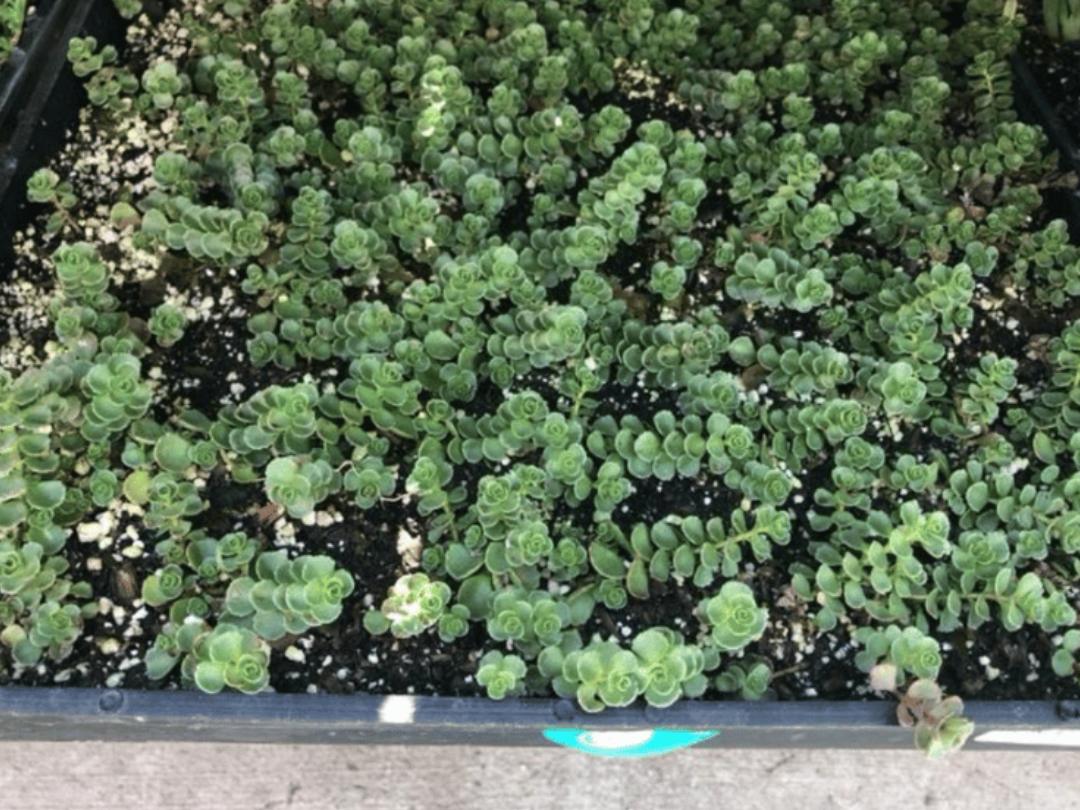
The image above of John Creech Stonecrop gives you an idea of what a great material it is work with — and how great this sedum would look surrounding boulders, highlighting larger succulents or blending in with other ground cover sedums. The flat in the photo must hold at least 60 plants!
Sedum Jelly Bean Plant (Sedum rubrotinctum) is another outstanding easy to grow drought-tolerant ground cover. The leaves are bulbous with red tips (as shown in photo below). They look a bit like jelly beans. This sedum is also referred to as pork-n-beans.
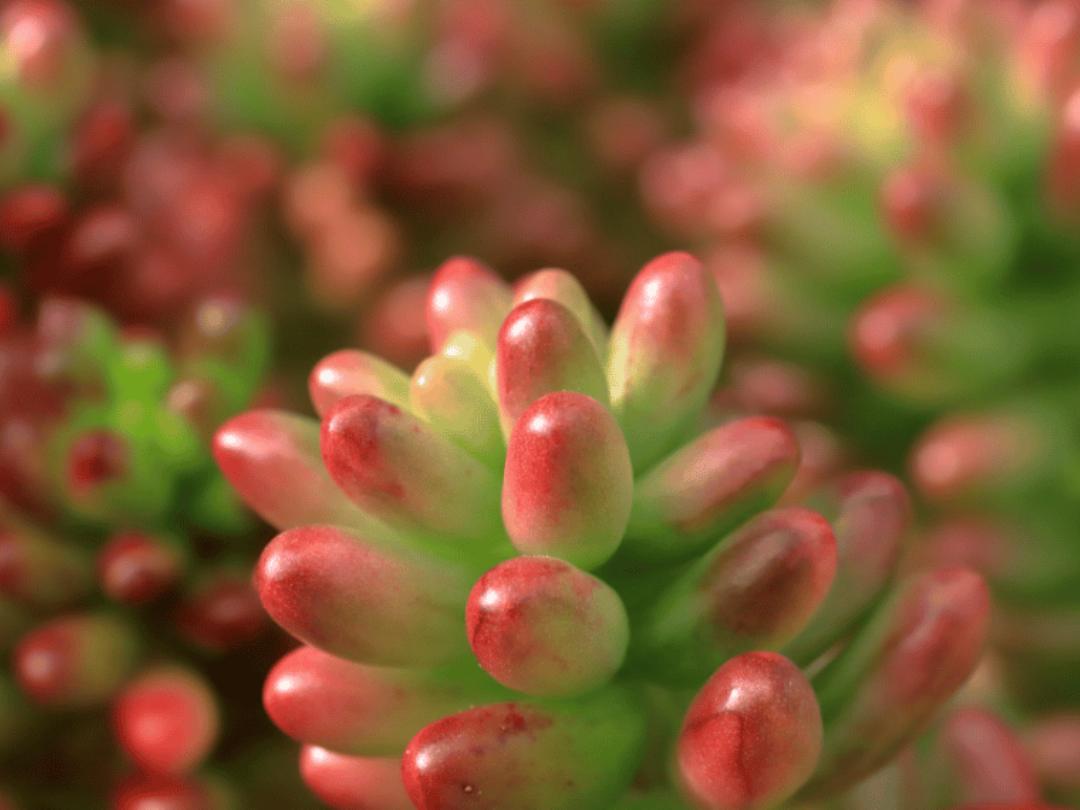
There are a few ground cover sedum succulents that add brilliant splashes of yellow like Golden Sedum (Sedum rupestre ‘Angelina’) and Gold Moss Sedum (Sedum acre ‘Gold Moss’ or ‘Goldenmoss’.) Gold Moss grows to about 3″ tall and 12-24” wide.
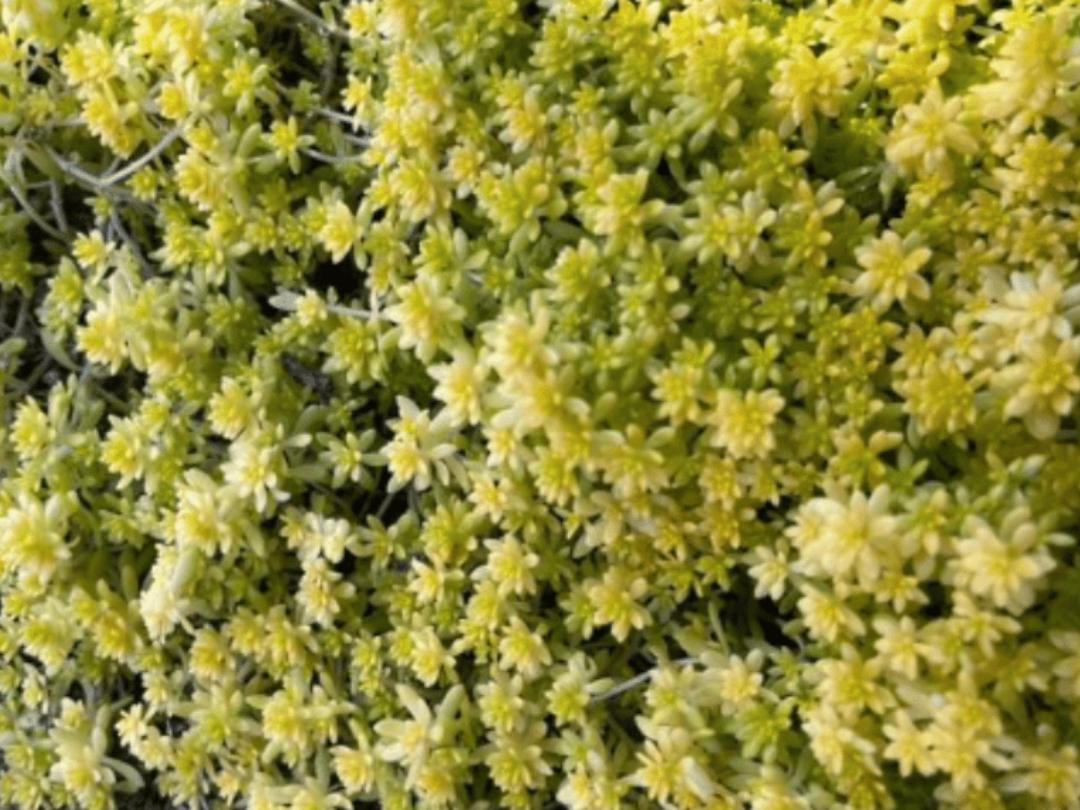
Add some red to your garden. There are also ground cover sedum succulents that add red to the garden, including Sedum spurium ‘Red Carpet’, Sedum ‘Bronze Carpet’ (below left), Sedum spurium ‘Dragon’s blood’ (below right), and Sedum spurium ‘Voodoo’.
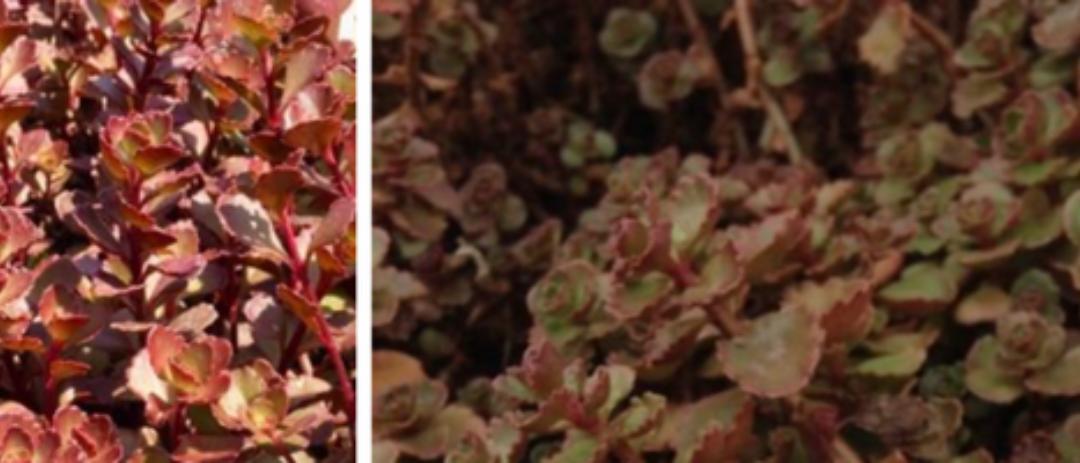
Another one of my favorite ground cover sedums is Sedum spurium ‘Tricolor’.
This creeping succulent has variegated leaves that are green in the center with white and then some pink along the leaves edges (see photo below).
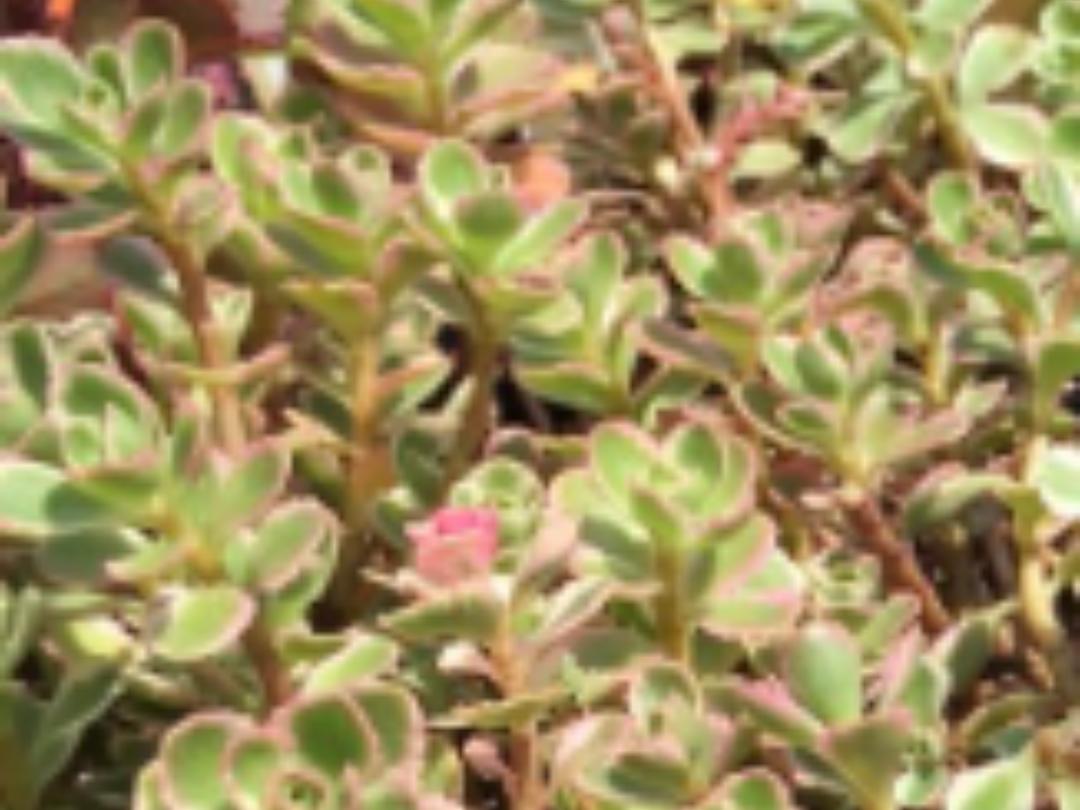
These sedum ground covers have also been used as roof covers! In New York City, the Javits Center has a roof planted with 14 different types of sedum and its own livecam! The 6.75 acre living roof has attracted many birds, insects and even bats.
Lots of stores are having fun with sedum ground covers! I like what they are calling a Multi-color Sedum Mat at Home Depot.
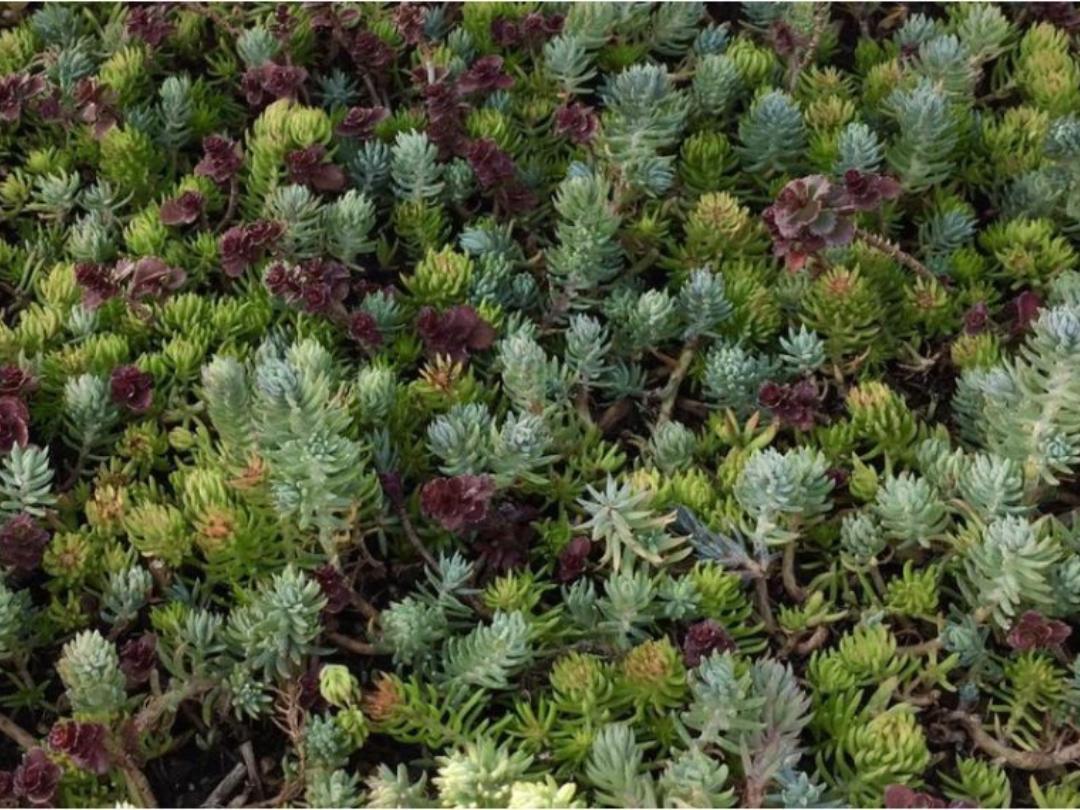
The photo above is a mixed flat called Sedum Flaming Trio, with Angelina (yellow), Reflexum (red), and Spurium (blue) sedum succulents.
3. Use sedum succulents as container plants
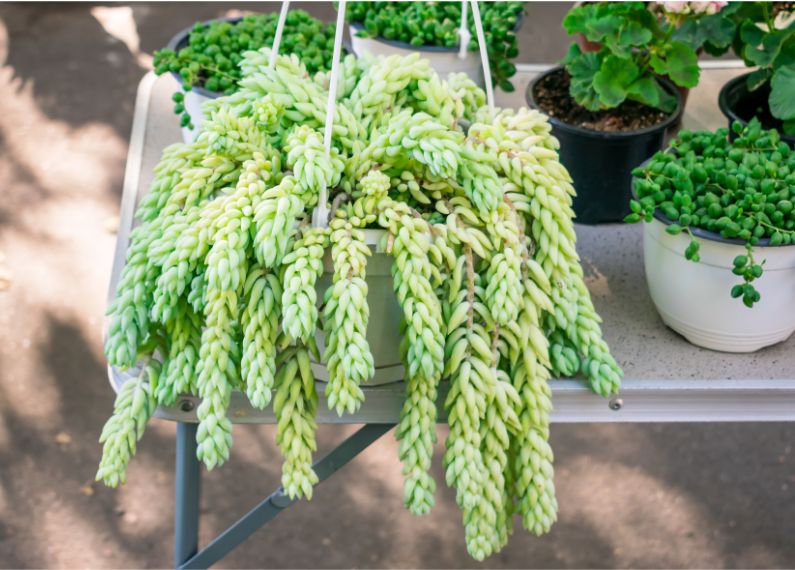
Finally, the brilliance of sedum in pots!
And not just the groundcover-like sedum you could use as filler, but the funky drooping and trailing sedum that dangles out of pots like Burro’s Tail sedum (sedum morganianum.)
This type of sedum is also referred to as Donkey’s Tail, Lamb’s Tail, and Horse’s Tail. These lovely stems can hang down up to three or even four feet!
Make sure to provide them with plenty of sun if you want faster growth. (Wait! The Burrito is the Burro’s Tail sedum, but a smaller variety?!)
You only have to water Sedum morganianum once a month in a lower light situation and during the winter. Water every 2-3 weeks if in full sun. This plant likes to dry out completely between watering. The blue-green leaves look plump when watered and start to shrivel when thirsty.
Other trailing sedums include Little Missy Sedum (Sedum Little Missy) and October Daphne (Sedum Sieboldii).
You can by these plants as cuttings and pop them in the soil. You know what that means for all you frugal gardeners? Or gardeners who love a challenge? Propagation is very easy – even dropped leaves root easily. If you cut off part of the vine – or take a few leaves – let them dry in the sun for two days then plant.
Add some sedum succulents to your life!
You should be able to find sedum at your local nursery. You can find out your zone here which will help you decide the stonecrop that’s best for your area.
You can also add these plants to the garden by visiting Bluestone Perennials. They have plenty of varieties available. I love their biodegradable pots because you’re not racking up the plastic usage and you can drop the pot and plant right into the soil.
Home Depot and Lowes are both great sources for sedums.
There are also plenty of artificial sedum options.
Home Depot has artificial stems that are modeled off the sedum Autumn Joy. These stems are 3-feet long with purple flowers.
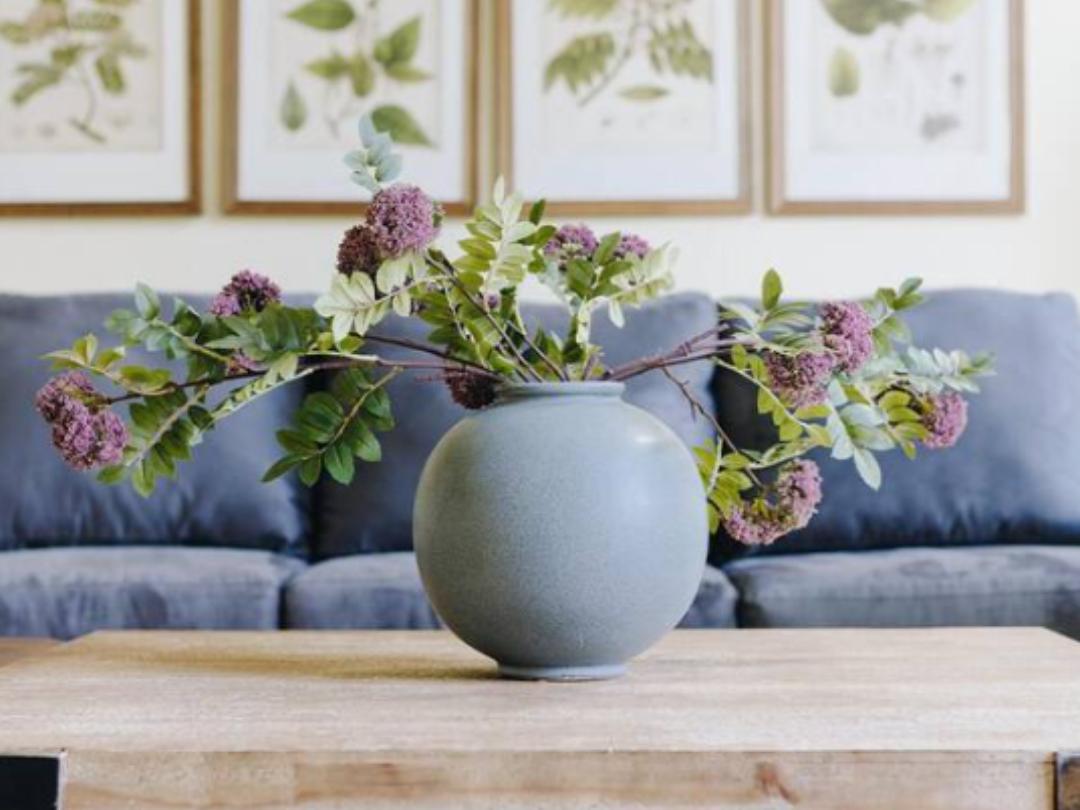
Crate and Barrel offers a Faux Sedum Album Succulent Stem as well as other artificial succelents.
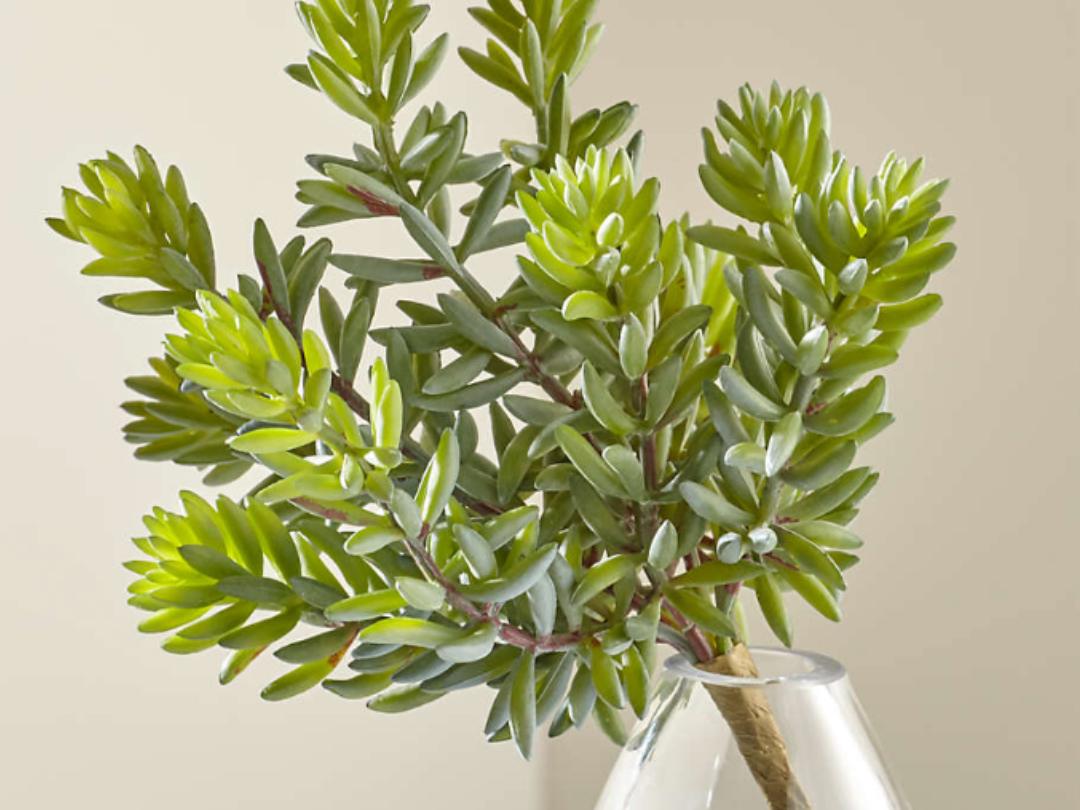
Etsy is selling artificial donkey tail sedums.
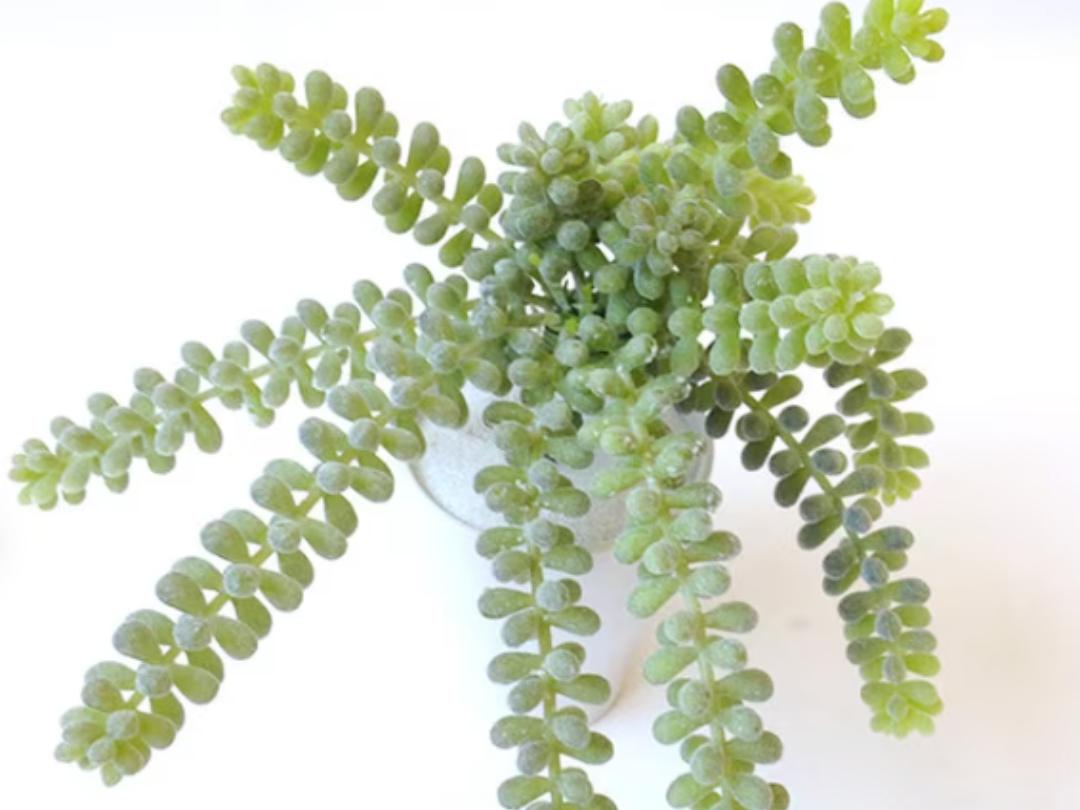
Sedum succulents are so easy to grow, I would only go faux in low light spaces or when you know you’re just too busy to bother!
Want more information? A nice list of Sedums with images can be found here.

